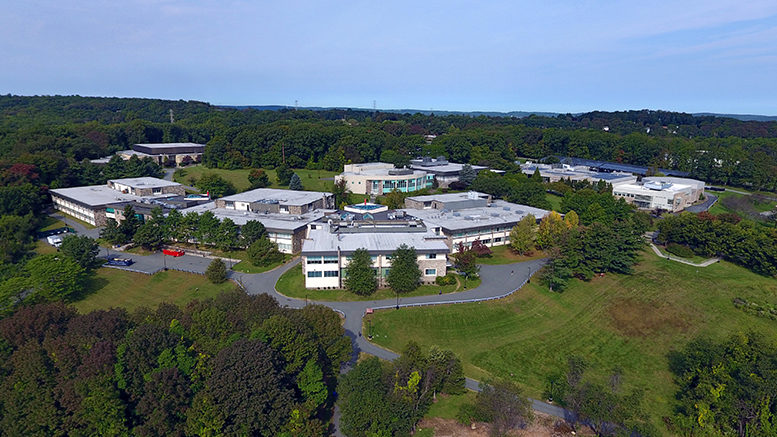Until recently, community college presidents were bracing for plummeting enrollments in the summer term due to the coronavirus pandemic. But as early-starting summer classes have begun, some community college leaders are reporting enrollments that are comparable to numbers from last summer.
The salvaging of summer sessions has been a source of relief and optimism for presidents and chancellors who had feared much worse and who don’t know what to expect for the fall.
At Arapahoe Community College (ACC) in the South Metro Denver area, all summer classes are being held remotely, except for some technical hands-on courses conducted face-to-face with a maximum of 10 students. President Diana Doyle forecasts that the final summer session enrollment will be close to last summer’s.
“We initially thought that we would see a much larger drop,” she says.
Brandon Martinez, an ACC student, lost two jobs in mid-March and had disappointing experiences with remote learning. But, not wanting to lose academic momentum, he registered for summer classes offered remotely. He was not planning to take online courses, but now he describes it as “an opportunity to become a better online learner.”
In northern New Jersey at the County College of Morris, President Anthony Iacono reports summer session enrollment numbers that are trending 5.2 percent above last year’s figures.
“We are optimistic that we’re going to hit our numbers from last year, or maybe even be a little bit higher than last year,” he says.
Summer enrollments are trending positive too at Northern Virginia Community College (NOVA), which enrolls more than 70,000 students, despite all classes being offered remotely. As of mid-May, there were 9,858 full-time equivalent (FTE) enrollments in summer courses, which compares to 8,564 FTEs for the entire 2019 summer, equaling a 13 percent increase, according to Sheri Robertson, the college’s interim chief academic officer.
There is time for more students to register for classes starting in June, although some students may cancel their registrations, Robertson says.
Fall enrollments highly uncertain
The trends in summer session enrollments may or may not be a harbinger of what to expect for the fall. The unknown for the fall is: How will colleges offer courses? Will instruction be online? Will face-to-face instruction return? To what extent will the operating formats vary between institutions that are in the same market for students?
Given these unknowns, “students are waiting-and-seeing before making any enrollment decisions,” says Joe Garcia, chancellor of the thirteen-college Colorado Community College System. “The normal enrollment timeline will lag this year.”
Students and families are watching closely what community colleges plan to do for the fall before making their decisions. A limited number of community colleges so far have committed to remote for the fall. For example, the Dallas County Community College District in Texas plans “predominantly online” classes for the fall, as do the 115 member colleges of the California community college system.
In South Carolina, Midlands Technical College (MTC) last week announced that it will welcome students back to all six campuses for traditional instruction starting in August for the fall term, in addition to continuing its remote options. As part of its reopening plan, the college will host an employee-only virtual town hall on May 29. A student town hall will follow as part of an MTC Live Facebook event on June 11.
All colleges have plans that include various scenarios and potential responses. Many of them have culled input from faculty, staff, students, business and industry, community organizations and others in making those plans.
“We have to be flexible and prepared for multiple eventualities,” Robertson says. “We’ve asked staff and faculty to think about plans A, B and C.”
New Jersey’s CCM is ready to reopen if the state lifts the executive order closing colleges and universities, Iacono says. At this point, he’s planning for only half to one-quarter of classes to be face-to-face this fall with the rest either remote synchronous or asynchronous.
Factors to watch
A possible scenario for the fall is that community colleges will add enrollments as unemployed and under-employed adult learners choose to go back to school. This has been the norm during recessions, though education advocates note that this situation may be different.
Another possibility is that students who would otherwise attend bachelor’s-granting institutions will migrate to more affordable community colleges, either as degree-seeking students or as non-degree visiting students. This will be especially the case if bachelor’s institutions operate in remote capacities during the fall.
Scott Markland, senior vice president at Sinclair College in Dayton, Ohio, believes that many students will register late, as they did at Sinclair for summer sessions that started on May 11.
“We saw quite a number of students that were waiting to see what was going to happen. Summer offers clues for the fall,” he says.
Still, no one knows what will happen with enrollments in this unprecedented situation, and losses remain a possibility. There is a concern that the number of recent high school graduates enrolling at community colleges will decline, especially if learning is remote.
A growing number of college presidents also are worried that lower-income students may not be able to continue with their education on account of finances, losing their jobs, family obligations, access to technology and the internet, transportation and childcare.
State cuts on the horizon
Robert Zemsky, professor of education at the University of Pennsylvania, predicts that the fall enrollment outcomes for community colleges will vary based on the operating conditions of community colleges and their competitors.
“It’s very hard to make a summary statement about community colleges,” he says. The local contexts shape their enrollments, he says.
Regardless of enrollment headcounts this summer and fall, Zemsky warns, “The big problem for community colleges will be public appropriations.” Reduced state support will drastically strain community college resources, he says, no matter what the enrollment levels.

